A428 Black Cat to Caxton Gibbet
We're working with MOLA (Museum of London Archaeology) to excavate and record any archaeological features before we start construction.
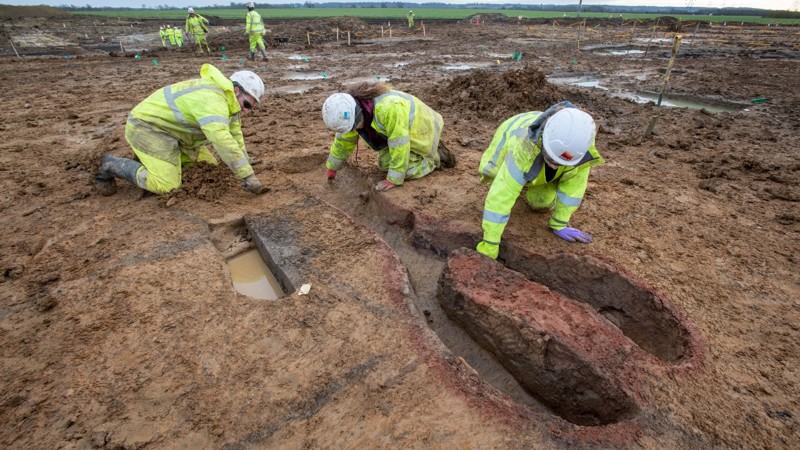
Headless animals, possible vineyards and a stylus are among the discoveries unearthed by archaeologists working on National Highways A428 Black Cat to Caxton Gibbet improvements, helping experts build a detailed picture of what life was like in Britain through history.
Since 2021, we have been working with MOLA to build an incredibly detailed picture of what life was like in Bedfordshire and Cambridgeshire during the Iron Age (800 BC–AD 43) and Roman period (AD 43–410).
The team are investigating a vast area of land, the equivalent to 89 full-sized football pitches, making it one of the largest digs ever undertaken in the region. New discoveries continue to be made both in the field and the lab, providing clues about the lives of past inhabitants.
Local luxuries
In the lab, environmental evidence is revealing luxuries were enjoyed by local people. Archaeologists may even have found grape pollen in cores taken from waterlogged soil, suggesting vineyards were grown in this area during the Roman period. Local people may not only have been enjoying locally produced beer (discovered in 2022), but also wine.
Experts have also been able to identify examples of Roman influence in the region. Artefacts recovered during excavations show how new goods were imported through the Roman trade network. Amphora—a type of ancient storage jar—may have brought olive oil to Cambridgeshire from Spain, and expensive dinnerware, named Samian ware, came from Northern France.
Animal remains
Remains of animals, including sheep and pigs, reveal much about people’s diets through history. Sometimes the way these remains were disposed of contain further clues, such as the mixture of bones and pottery dumped in two separate pits in different settlements – possible evidence of ancient feasts!
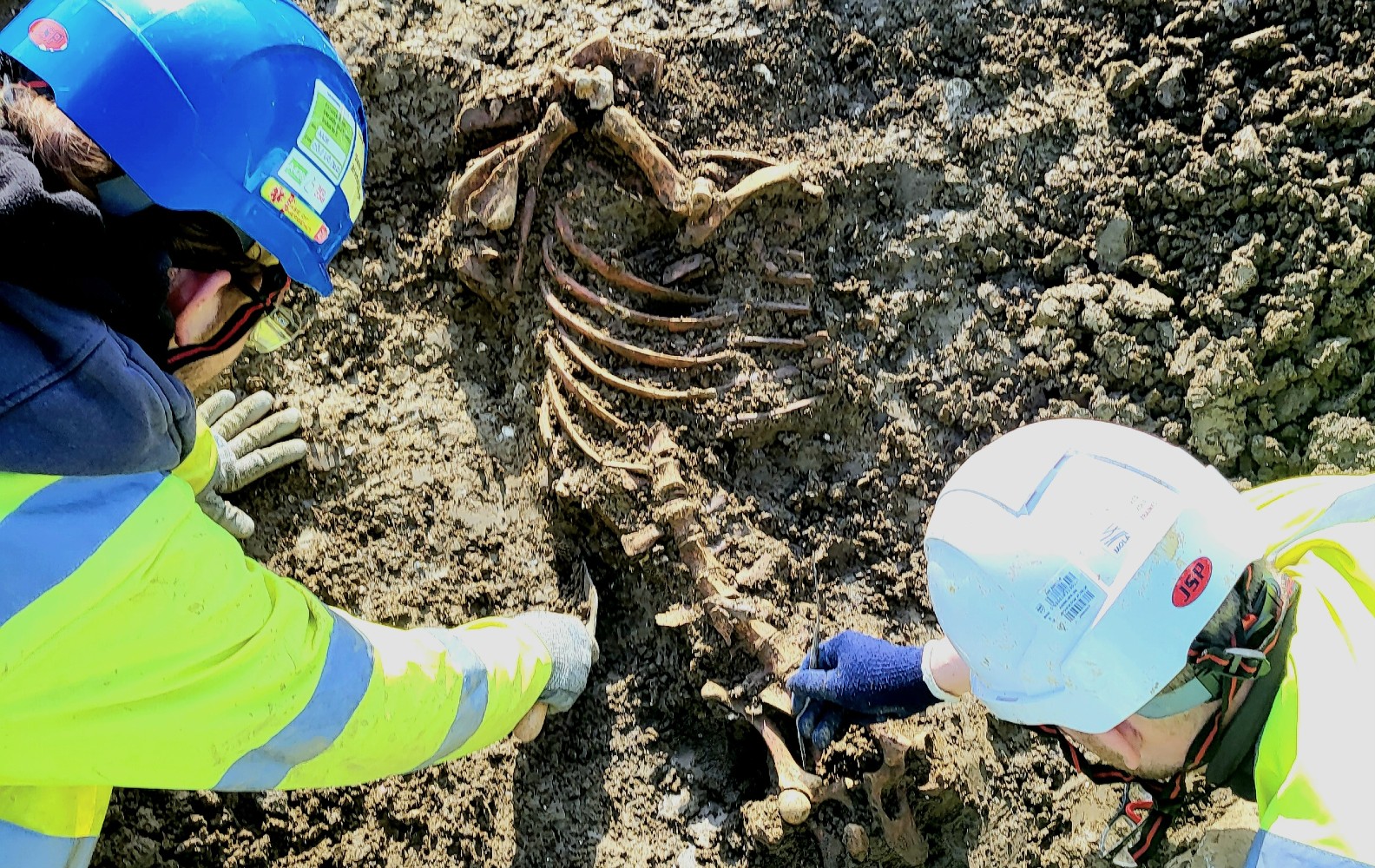
(Two archaeologists in high vis finding an animal skeleton)
Surprising finds
There have also been some surprises along the way, particularly in the form of a stylus. The Romans would have used it to write on their waxed tablets, just like modern day digital tablets. Styli (or styluses) were formed with a pointed end to write on the wax, and a trapezoidal one to erase the written words by smoothing the waxed surface flat again.
Until recently, the only objects known from this area dating before the Iron Age were stone arrowheads, suggesting small hunting groups roamed Cambridgeshire over 3,000 years ago. However, MOLA archaeologists have now found an unusual loom weight used in cloth making, which could date to the Bronze Age (2500–800 BC). If proven to be from this period, it would represent a very unexpected find and suggest people were living in this area far longer than originally believed.
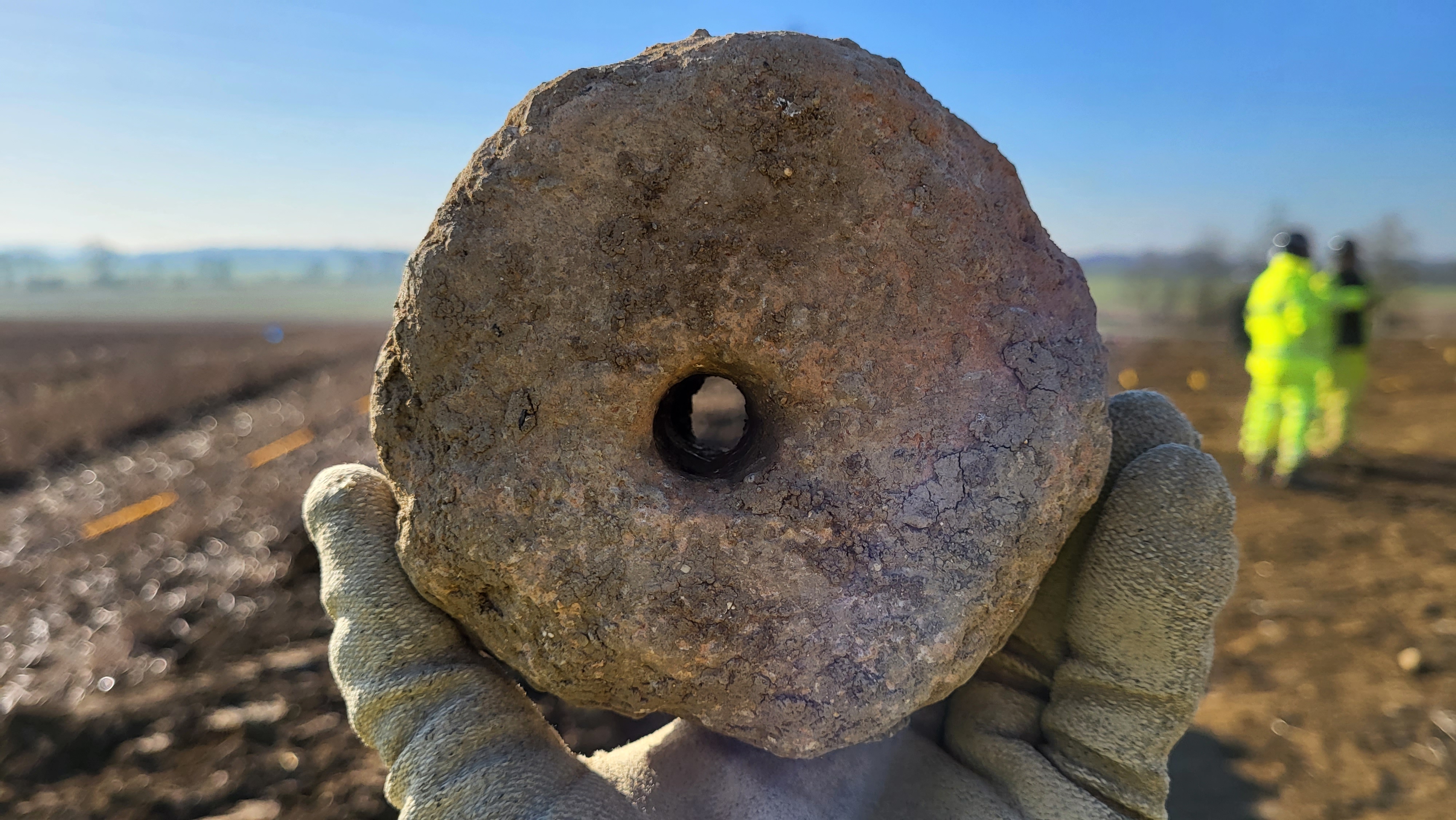
(Loom weight)
Waterlogged wood
Part of MOLA’s excavation area is a shallow valley where groundwater still gathers naturally. This means the ground is always wet and boggy. It would have been the same during the Iron Age, when the local community used this area for gathering water from shallow wells. Although this meant excavating was very muddy work for the archaeologists, it also led to some remarkable discoveries.
Wood is broken down by fungi and micro-organisms such as bacteria. But, if the wood is in very wet ground, it can take in water and become waterlogged. When wood is full of water and buried in wet ground, it doesn’t dry out. This means that oxygen can’t get to the wood. The bacteria can’t survive without oxygen, so there is nothing to help the wood decompose.
The conditions at the site have preserved several wooden objects in the boggy ground for 2000-years.
This Iron Age ladder was used by the local community to reach water from the shallow well.
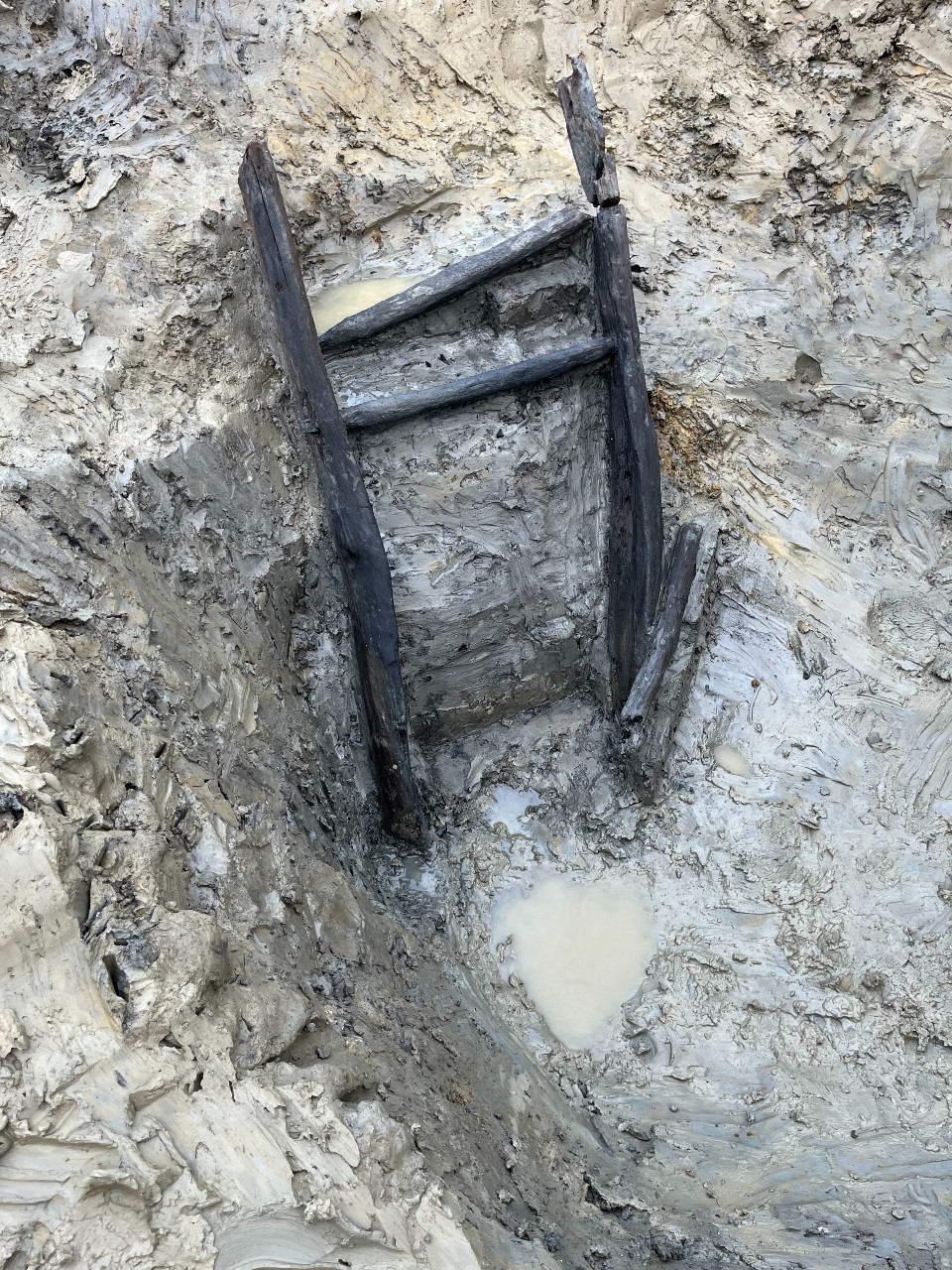
This may look like a basket, but it isn’t. It is actually a wattle panels (woven twigs and branches) covered with daub, which was made out of materials such as mud, crushed stone and straw or animal hair. This panel was used to line the waterhole, but wattle and daub was also used to build houses for thousands of years. It is incredibly rare to find some preserved from as long ago as the Iron Age.
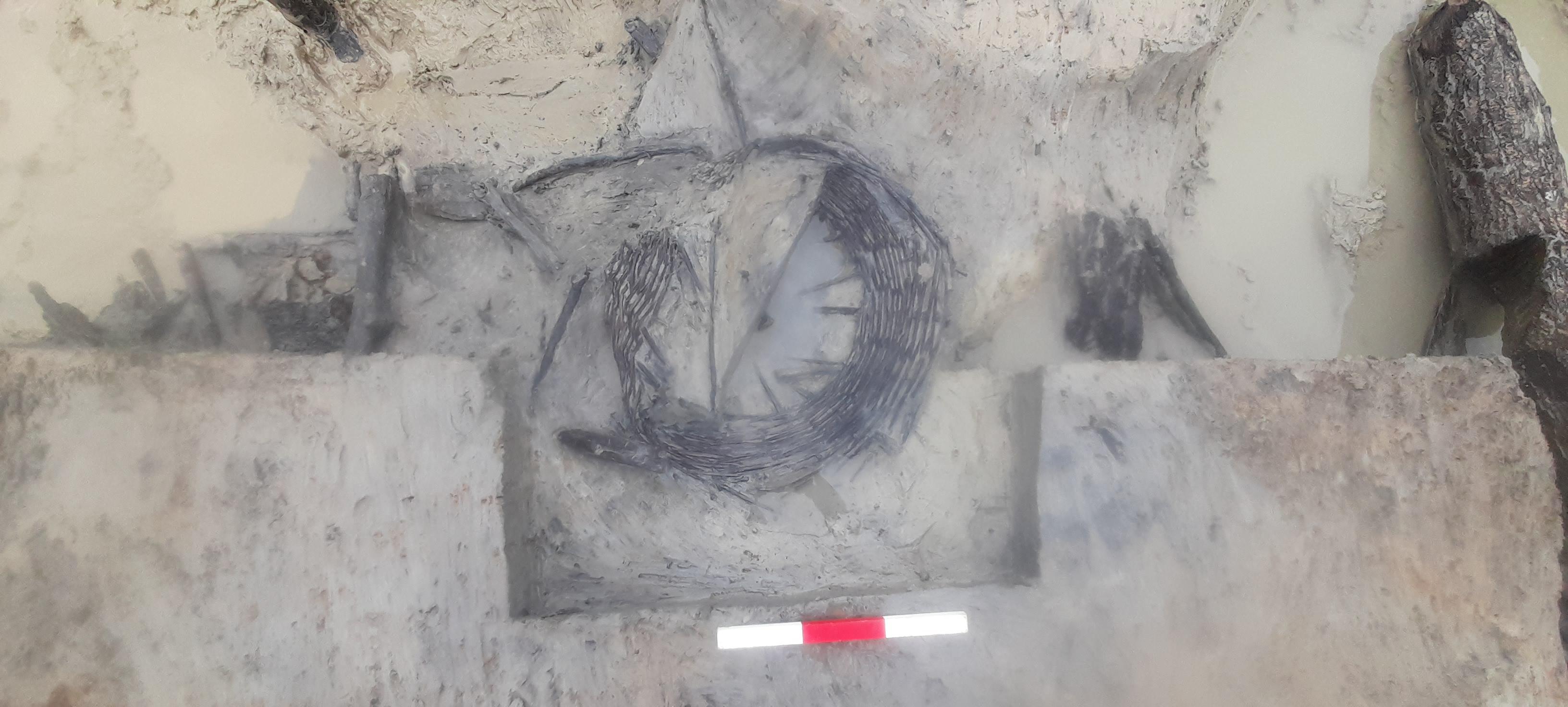
Discover A428 archaeology learning packs
MOLA's learning pack brings archaeology to life through a series of exciting and engaging activities for children working at Key Stage 2 level.
Get your learning pack